Contents
Could you talk a little about the problem Captur is trying to solve?
Let’s talk about some of Captur’s customers and how they’re using this technology.
How valuable are data sets and training data for the future of your business?
Why and how do you use Encord?


Training Computer Vision Models to Track Rented Assets
How can AI help solve real-world operations problems for businesses and their on-the-ground employees?
That’s the question that drove Charlotte Bax to start Captur.
Founded in 2020, Captur uses computer vision to capture images of and detect damage to physical assets. Over the past two years, Captur has worked with major global players in micro-mobility and last-mile delivery, including Tier, Zapp, and Buzzbike, helping these companies access real-time data about their operations.
Like most start-up founders, Bax wears many hats. Every day, she is responsible for making a variety of decisions. One day, in early 2021, Bax made the decision to use Encord to help build out Captur’s data pipeline infrastructure.
“When you’re running a startup, anything that’s core to your product, you build it. In any case, where you can, you buy tools so that you can move faster,” says Bax. “Machine learning is core to our technology, but the reason for buying Encord was that it could help us improve the quality of the data going into our models, and that would help us speed up our go-to-market measurably.”
We recently caught up with Bax to hear more about the power of computer vision to assess the condition of remote assets, her experience using Encord, and her mission to bring applied AI to long-tail industries like operations.

The following interview has been edited for clarity and length.
Could you talk a little about the problem Captur is trying to solve?
Charlotte Bax: The problem we’re trying to solve is basically: how can companies track assets and resolve issues remotely? Ultimately making scaling logistics easier and more efficient.
Most people are familiar with the experience of renting a car. Before you leave the parking lot, you walk around the vehicle with a representative from the rental car company. Together, you mark down any visible signs of damage. This inspection usually only lasts a few minutes. But what happens if something isn’t caught by either party? Who’s to say if the scratch on the passenger’s side door was there before the driver rented the car? It’s a lose-lose situation for both parties. Computer vision can help companies and users track that type of damage, removing the likelihood of human error.
That example is just the tip of the iceberg. Property, vehicles, construction equipment– there are multiple different verticals that could benefit from computer vision providing real-time operations information about physical assets. As the on-demand business model grows, more and more companies will look to computer vision technologies because on-demand businesses–the ones where customers rent items on-demand–need new operating tools, ones that can enable them to scale operations that manage rented and shared physical items efficiently.
It might surprise you to learn that most companies with physical operations still rely on hand-built spreadsheets for asset tracking. This method lends itself to errors and disputes. Also, spreadsheets don’t provide any real-time data or visibility about operations, so companies don’t have access to the data needed to develop basic metrics for making decisions about their business. Computer vision can not only help companies track the condition of their assets remotely, but it can also provide them with the data needed to automate their frontline decision-making using AI.

Let’s talk about some of Captur’s customers and how they’re using this technology.
Bax: We’ve been working a lot with micro-mobility companies, such as e-scooters and e-bikes. We’re starting to move into some other asset classes, such as larger vehicles like vans and cargo bikes, and eventually, we aim to offer our service for any mobile asset.
Our product is API first, so for B2B customers, we’re embedded in their apps. With e-scooters, for instance, riders take a photo of the scooter at the end of their trip and upload those images into the company’s app.
Our technology automatically verifies these photos, and ultimately, Captur’s models provide an output in the form of a suggested action based on that visual information. For instance, ‘Yes, that’s good parking,’ or ‘No that’s bad parking’. ‘Yes, the scooter is in good condition,’ or ‘No it’s been damaged’. The goal is to provide the end user real-time feedback on their device and instantly prevent safety issues.
How valuable are data sets and training data for the future of your business?
Bax: Incredibly valuable. Our approach as a business has always been a data-centric approach that lets us build models in a transparent and collaborative way. Think of it as building personalized machine learning for companies. We build up data sets that are very specialized– certain types of assets that have certain types of issues, damages, and conditions. These use cases are very specific. We can do that in a scalable way across multiple customers because we have a solid data review process and pipeline, which has been critical for both building models and providing our customers with transparency and confidence.
Why and how do you use Encord?
Bax: When we came across Encord, we were thinking about how we were going to scale our data annotation pipeline and data quality assurance. We wanted to be checking subsets of our models’ decisions at any given time to evaluate their performance.
That’s something we could have spent a solid nine months alone building in-house, but we really liked what Encord could do. We have essentially built out a critical part of our own pipeline infrastructure in tandem with them. Their team has been a real product development partner to us.
We use Encord as a part of our training and evaluation pipeline. Both annotating new datasets and evaluating the results from live models. We use expert-in-the-loop feedback to improve the model’s performance as quickly as possible.
In the beginning, we used a few different open-source tools to annotate images for training models. Still, once we got the scale of moving beyond research projects and really needing a production-ready system, we moved towards using Encord because of the additional features in the platform– like having a robust system to do quality control and a method for measuring the confidence scores of how much labelers agree– were ideal for scaling.
We needed a platform that enabled various different types of labeling because we have different types of machine learning challenges. Our goal is to diagnose the condition of an object, which requires several steps that include individual issue detection– e.g. damage to a scooter frame– and the condition of where something is placed, like where a scooter is parked.
We have six people who actively work on Encord daily, and the Encord team has been a great partner in helping us solve labeling challenges within the platform and also in helping us think about where this platform sits in the larger infrastructure we’re building.
Overall, Encord’s vision for automating data labeling and training data management really aligns with our mission of bringing computer vision to this long-tail of industries like operations. Many industries just haven't been able to take advantage of AI or computer vision automation because the data set doesn't exist or the tools that enable them to do so don’t exist. Encord is really the start of the tool that will enable many startups like us, who are focused on bringing applied AI to every industry, not just healthcare and autonomous vehicles.
Explore our products
Yes. In addition to being able to train models & run inference using our platform, you can either import model predictions via our APIs & Python SDK, integrate your model in the Encord annotation interface if it is deployed via API, or upload your own model weights.
At Encord, we take our security commitments very seriously. When working with us and using our services, you can ensure your and your customer's data is safe and secure. You always own labels, data & models, and Encord never shares any of your data with any third party. Encord is hosted securely on the Google Cloud Platform (GCP). Encord native integrations with private cloud buckets, ensuring that data never has to leave your own storage facility.
Any data passing through the Encord platform is encrypted both in-transit using TLS and at rest.
Encord is HIPAA&GDPR compliant, and maintains SOC2 Type II certification. Learn more about data security at Encord here.Yes. If you believe you’ve discovered a bug in Encord’s security, please get in touch at security@encord.com. Our security team promptly investigates all reported issues. Learn more about data security at Encord here.
Yes - we offer managed on-demand premium labeling-as-a-service designed to meet your specific business objectives and offer our expert support to help you meet your goals. Our active learning platform and suite of tools are designed to automate the annotation process and maximise the ROI of each human input. The purpose of our software is to help you label less data.
The best way to spend less on labeling is using purpose-built annotation software, automation features, and active learning techniques. Encord's platform provides several automation techniques, including model-assisted labeling & auto-segmentation. High-complexity use cases have seen 60-80% reduction in labeling costs.
Encord offers three different support plans: standard, premium, and enterprise support. Note that custom service agreements and uptime SLAs require an enterprise support plan. Learn more about our support plans here.
